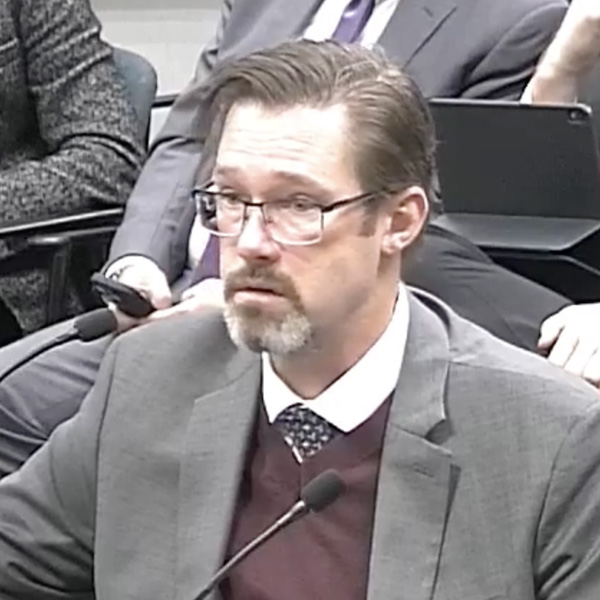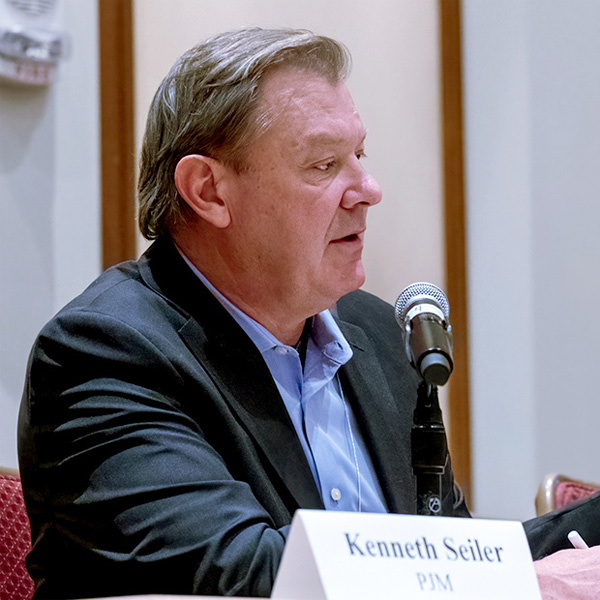Texas regulators last week rejected ERCOT’s proposed budget and administration fee increase, agreeing instead to a more incremental growth in its revenues.
The Public Utility Commission cut a little over $31 million from the grid operator’s original biennial budget request that was approved by its Board of Directors in June. It also set ERCOT’s administration fee at 63 cents/MWh, 11.2% lower than its first ask of 71 cents/MWh. That still is a 13.5% increase over the current admin fee of 55.5 cents/MWh. It goes into effect Jan. 1 (38533).
ERCOT now will work with budgets of $405.7 million and $414.3 million to cover operating expenses, project spending and debt-service obligations over the next two years. It originally requested $424.03 million and $426.99 million for 2024 and 2025, respectively.
“It is important for ERCOT to look out into the future to have stability. … I don’t like rate shock,” Commissioner Will McAdams said during the Nov. 2 open meeting. He decried the magnitude of ERCOT’s financial requests during the PUC’s previous open meeting in October. (See ERCOT Defends Admin Fee Increase Before PUC.)
ERCOT had offered to revise the budget to $414.7 million and $416.6 million over the next two years and the admin fee to 69 cents/MWh, taking advantage of a positive $36.2 million variance identified since the June board meeting. But it wasn’t enough. (See “F&A Proposes Revised Budget,” ERCOT Board, IMM Debate Ancillary Service Costs.)
The commission linked its approval of the budget to ERCOT’s ability to meet performance measures suggested by Commissioner Lori Cobos. They include:
-
- Delivering a value of lost load study associated with a reliability standard’s development in the first quarter of 2024.
- Implementing the dispatchable reliability reserve service ancillary product “as expeditiously as possible” and aligning it with the real-time co-optimization plus battery project (RTC+B). (See “TAC Tables DRRS Revision, to Discuss Options with PUC,” ERCOT Technical Advisory Committee Briefs: Oct. 24, 2023.)
- Implementing the performance credit mechanism market design and aligning it with RTC+B as well.
The commission also directed ERCOT to provide it with quarterly progress reports on meeting the performance measures and an annual report related to the key performance indicators in the grid operator’s August budget submission.
After the first admin fee increase since 2016, it will not be taken up again until 2026. ERCOT CEO Pablo Vegas said this will provide staff a stable environment as they work with stakeholders to reshape the market.
“We are operating one of the most complex systems in the world, and arguably the most complicated in the United States right now,” Vegas said.
Commissioner Jimmy Glotfelty urged ERCOT to “become more efficient” in reducing costs. “Too many across-the-board salary increases; too many across-the-board bonuses,” he said, pointing to $23.2 million of proposed incentives.
ERCOT’s plan to increase its staff from 843 to more than 1,000 was met with objections from the PUC and several stakeholders commenting in the docket. The grid operator said it needs the staff to fight legal challenges dating back to the February 2021 winter storm and to respond to a nearly 300% increase in legislation introduced since the storm. The latter will require more public affairs personnel and office space near the state Capitol, ERCOT has said.
Vegas said a 1,000-person headcount is typical of other grid operators. SPP, which manages transmission across a 14-state footprint — its western expansion will add at least four more — requested 707 employees in its 2024 budget request that was approved last month.
Reacting to ERCOT’s plans for additional office space and more public affairs personnel, state Sen. José Menéndez (D) said, somewhat sarcastically, “Quite frankly, I will be happy to share office space with ERCOT instead of a multimillion-dollar increase to my constituents.”
Monitor to Stay Independent
The PUC also accepted staff revisions to the request for proposals for the 2024-2027 market monitoring contract after receiving pushback from lawmakers and some stakeholders.
The proposed “electric market monitor” position will remain the “independent market monitor,” signaling the Monitor’s independence from ERCOT. State Sen. Charles Schwertner (R), the architect behind most recent market legislation, filed a letter with the commission saying the original RFP’s language implied the Monitor no longer is “truly independent” (55222). (See ERCOT Monitor’s Name Change Raises Legislative Concerns.)
“Hearing the concerns that have been expressed in public, I recognize the specific words I put in [the contract] are misleading. I want to walk those back,” said Barksdale English, director of compliance and enforcement for the PUC.
The revised RFP also removes language requiring the Monitor to notify the commission before speaking publicly and clarifies that the contract’s termination is to be discussed and voted on in a public forum.
Potomac Economics, which has served as ERCOT’s IMM since 2006, is the only organization that has responded to the RFP. Responses were due Oct. 30, and the contract begins Jan. 1.


